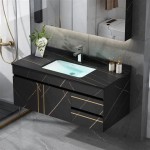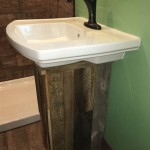How to Use Plumbers Putty on a Bathroom Sink Drain
Plumbers putty is a versatile material used in plumbing to create a watertight seal around fixtures like bathroom sink drains. It is a pliable, non-hardening compound that comes in a small, flat container. It is composed of a mixture of mineral oil, talc, and other ingredients that allow it to remain malleable even after it has been applied. When used correctly, plumbers putty creates a durable and reliable seal that prevents leaks and drips around the drain.
Preparing the Drain and Putty
Before starting, gather the necessary tools and materials. This includes plumbers putty, a putty knife, a damp cloth, and a utility knife. You may also want to wear gloves to protect your hands from the putty.
First, remove the old drain assembly from the sink. This typically involves unscrewing the drain stopper and the tailpiece connecting the drainpipe to the sink. Carefully lift the drain assembly from the sink and discard it. Next, clean the sink drain opening and the underside of the drain assembly. Use a damp cloth to wipe away any debris or residue.
Now, prepare the plumbers putty. Take a small amount of putty from the container, about the size of a golf ball. Knead the putty in your hands to soften it and make it more pliable. Avoid working with the putty for too long, as it can warm up and become difficult to handle. You want the putty to be smooth and consistent, but not too soft. If the putty becomes too warm, cool it down in the refrigerator for a few minutes.
Applying the Putty
Once the putty is prepared, form it into a thin, flat disc. The disc should be slightly larger than the drain opening on the sink. Press the putty disc firmly into the drain opening, making sure to center it and create a smooth, even layer. Use a putty knife to help smooth out the putty and ensure a proper fit.
Next, take the drain assembly and carefully position it over the putty. Press the assembly down firmly to create a tight seal. While maintaining pressure on the assembly, use a twisting motion to fully seat the drain assembly into the sink. Ensure that the drain assembly is completely flush with the sink surface.
Once the drain assembly is in place, use a damp cloth to wipe away any excess putty that has squeezed out from around the edges. Avoid pressing the putty too hard, as it may cause it to spread and make the seal less effective.
Tips for Success
For best results, use a good quality plumbers putty. Avoid using cheap, hard-to-work-with putty, as it may not provide a long-lasting seal.
Before applying the putty, ensure the drain opening is clean and free of any debris. A clean surface will allow the putty to adhere properly and prevent leaks.
Apply the putty in a thin, even layer. Too much putty can make the seal difficult to create and may even cause the drain assembly to sit too high in the sink.
Finally, remember to test the drain assembly after applying the putty. Turn the water on and check for any leaks. If you see any leaks, remove the drain assembly and reapply the putty, making sure to create a tighter seal. If the leaks persist, you may need to replace the drain assembly.

How To Properly Use Plumber S Putty Oatey

How To Use Plumber S Putty As Easy Playdough

How To Use Plumber S Putty Repair And Replace

How To Use Plumber S Putty It As Easy Play Doh

How To Use Plumber S Putty

Plumber S Putty Or Silicone Caulk Which Is Best Tinged Blue

How To Use Plumber S Putty

How To Properly Use Plumber S Putty Oatey

How To Use Plumbers Putty

The Comprehensive Guide To Plumber S Putty Mr Rooter Plumbing
Related Posts







